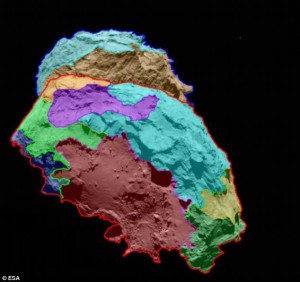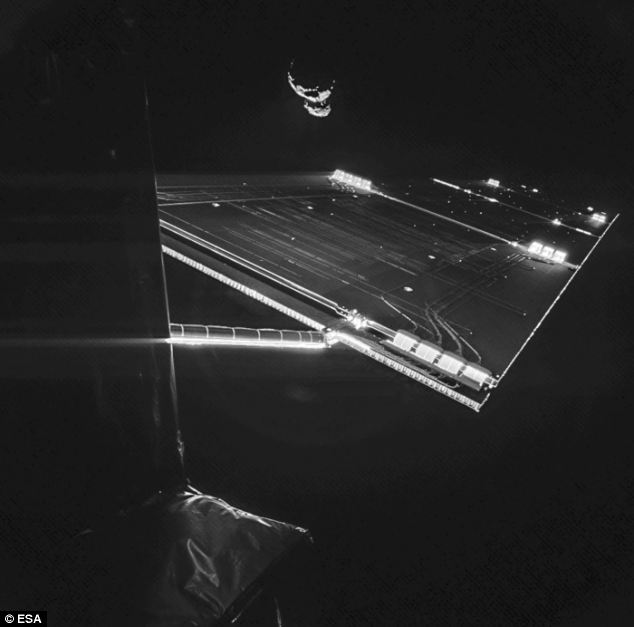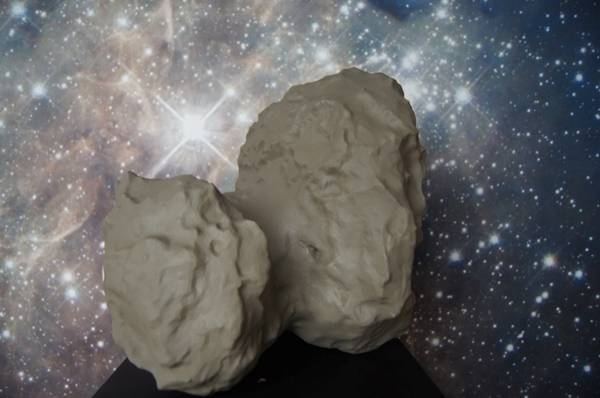Landing a spacecraft as big as a manatee on an enormous comet seems like science fiction. But there is a comet — named 67P/Churyumov-Gerasimenko — that the European Space Agency (ESA) wants to explore. In just a few days, the Rosetta will be positioned directly above the comet.
The Rosetta will be instructed to release Philae, a tiny lander probe, to send it down to the comet. Named after Philae Island, where an additional tool (besides the Rosetta stone) was found to help decipher Egyptian hieroglyphics, Philae has no rocket landing thrusters or guidance system. Pinpointing an area of 1 square km for landing, Philae will be released and could land anywhere in the designated target zone. Unlike the pinpointed destinations of the moon or mars rover landings, the touch down target had to be acquired after reaching the comet itself. Landing on this comet would be a tremendous feat of engineering, and would allow for unprecendented exploration of a comet.
Stephan Ulamec, manager of the Philae landing mission, touched on the incredibly high level of risk for failure after 20 years of careful efforts: “You plan for 20 years and then, in the end, you realize the probe you have worked on may touch down on a nice flat area and you are fine or it could move 10 meters to one side and hit a boulder and everything is lost, twenty years of my career – and those of my colleagues – will be boiled down those few seconds.” Selecting the right landing spot is a key element to the success of the mission. But how to pick a landing spot on a comet whose surface features are virtually unknown is something that engineers had to solve. By using the Rosetta spacecraft to map the comet’s surface in detail, they were able to create an accurate 3D model of the comet. Last August, after a 10 year journey through space, Rosetta became “the first spacecraft to successfully rendezvous with a comet with the intent to enter orbit.” Using images from Rosetta, the ESA has been working with Sculpteo to produce the 3D scaled model of the comet.
Project Manager of the incredible Rosetta mission, Philippe Gaudon, spoke about the benefits of visualization when planning a complicated mission such as landing a spacecraft on a comet: “Having a physical object in our hands, to hold, observe and show definitely helped us make our decision. Even if you have a good imagination, it’s always easier to plan the journey when you have the 3D print on hand.” It took 1 billion dollars and 10 years to plan and build Rosetta, and another 10 years to send it on a complex route into deep space for its date with Comet 67P.

“Several years ago, when we scanned Steins and Lutetia asteroids, we ordered physical versions of it made through manual plaster molding. But it was definitely less precise than the print we got for 67P/Churymov-Gerasimenko. It was also a lot faster: we got the print exactly one week after we uploaded it on Sculpteo’s website.”
It occurred to me that this is similar to the approach that surgeons have used to visualize complicated surgery. Using data from a CT Scan, doctors were able to hold the heart in their hands, which enabled a very high level of visualization. So instead of using a CT Scan, the ESA used images from a spaceship to map the comet’s surface in detail, and print out a dynamic visualization tool to help them find the best 1 square km to land on.
Comets are incredibly valuable sources of information about the history of what we know about our universe. They are like time capsules, or space mummies, because they spent so time frozen in the outer solar system. The scientific community would love to explore physical specimens from 4.5 billion years ago, wouldn’t you?





